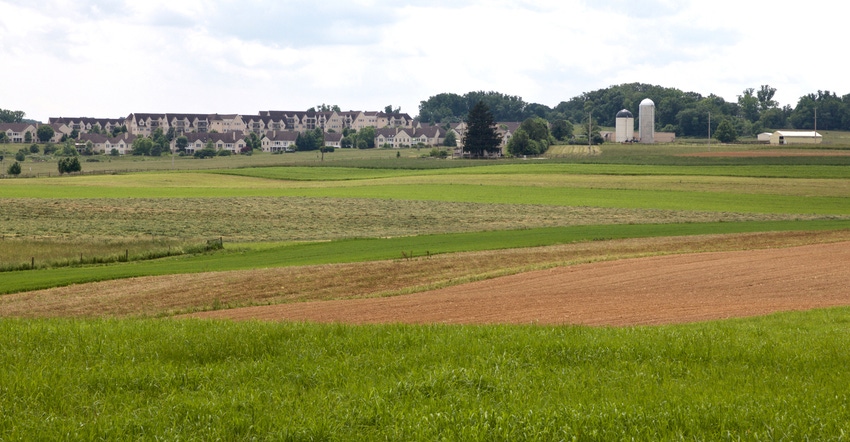July 29, 2022

When we moved to northern Anoka County more than three decades ago, we drove through a yellow blinking light north of Anoka on Highway 47, passing open fields and a hog farm as we headed 8 miles home through rural Ramsey.
Today, the southern half of that stretch of rebuilt highway is lined with houses, gas stations and several strip malls. The hog farm was sold a while ago to a developer. Traffic is regulated by three intersections, with stoplights and turn lanes.
Where I live is no different from other areas of Minnesota that are experiencing population growth. The challenge, however, is to make sure that land development follows commonsense planning.
A new report from the American Farmland Trust highlights the importance of smart growth and investment in Midwest downtowns and main streets. Research reported in “Farms Under Threat 2040: Choosing an Abundant Future,” shows that by 2040, as many as 3,165,000 acres — nearly 5,000 square miles of farmland — may be lost to urban and low-density conversion across Illinois, Indiana, Iowa, Michigan, Minnesota, Ohio and Wisconsin. This loss will disproportionately impact smaller farms that often serve local markets with fresh produce, eggs, dairy products and meat.
By 2040, agriculture in the Midwest will also be significantly constrained by water due to effects of climate change, the report authors note. As temperatures continue to rise in the Midwest, precipitation is expected to become more intense in late winter and early spring, followed by drier summer months. These climatic factors will lead to increased flooding, compromised drinking water, reduced air quality and greater pressures on agricultural land.
What Minnesota could lose
The report considered three future scenarios of development between 2016 and 2040 — “business as usual” (low-density sprawl proliferates; farms rapidly lost and fragmented); “runaway sprawl” (inefficient development; low-density sprawl dominates; few farms remain near cities); and “better-built cities” (efficient; denser community growth; more farms remain).
In Minnesota, if recent trends continue, 369,500 acres of state farmland will be paved over, fragmented or converted to uses that jeopardize agriculture by 2040, the report estimates.
That’s the equivalent of losing 1,800 farms, $253 million in farm output and 4,700 farm jobs. Hardest-hit counties would be Stearns, Scott and Washington.
If runaway sprawl were to take over, projected conversion of farmland acreage could jump to 500,900 acres.
However, by following a “better-built cities” compact growth plan, farmland taken out of production could drop to 205,200 acres. That represents 295,700 acres of farmland saved, equivalent to 1,300 farms saved and 3,500 jobs saved.
In ranking the 50 states for their ag land protection, AFT places Minnesota in the middle at 24th (see table).

To save farmland, AFT supports compact development to minimize sprawl, policies to permanently protect the best farmland with voluntary conservation easements, and getting a new generation of farmers on the path to success.
To learn more about the report, AFT is hosting state-specific webinars that will do deep-dives into its data. Webinar presenters will look at development scenarios and share how this information would be helpful to planners, policymakers and farm advocates. The webinar Farms Under Threat 2040: Choosing an Abundant Future for Minnesota is scheduled for Aug. 3.
AFT also has an interactive online mapping tool that shows projections by county in each state. To view your county, go to Farms Under Threat: Future Scenarios (farmland.org). Click on Minnesota, and enlarge the map to highlight your county for additional information.
To see how states rank, go to Farms Under Threat: The State of the States.
See related Farm Progress online stories at:
You May Also Like




